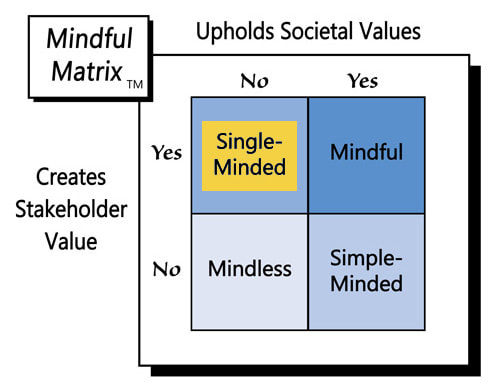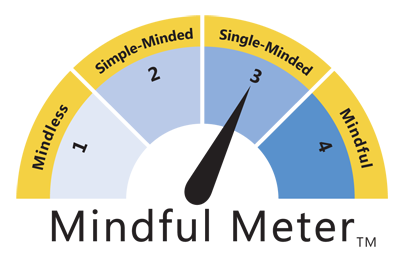A 30-year-old mother of two living in Nevada, VonHesse hasn’t worked outside the home since she and her military-career husband married eight years ago. However, she has been quite active around her house, earning about $5,000 a month, thanks to some creative and compelling photography that she puts online for a price.
The pictures aren’t the things you might expect a mother of a five-year-old daughter and two-year-old son to post on Pinterest or upload to Instagram. They’re photos and videos of VonHesse, posing seductively in all sorts of settings, wearing little or no clothing. VonHesse takes some of the photos herself, while her husband, who supports his wife’s unusual business venture, often helps. Patrons pay $5 to $50 a month to access the pics on a special website.
Besides the extra income she provides for her family, VonHesse says her entrepreneurship helps her feel good about her body, which many describe as full-figured or curvy. Her self-esteem has risen. When asked about her work and the example she’s setting for her children, she says:
“I think that the human body is a beautiful thing, and there is nothing to be ashamed of. I want them to love their bodies, and if they wanna profit from sharing images, then I would be fine with that.”
Seems like a nice marketing success story: An busy mom finds time to do something she enjoys and turn it into a business that provides significant income for her young family. Meanwhile, she and her husband develop important skills for the digital age. What’s not to like?
Well, the problem begins with a fairly obvious fact: This type of photography is pornography. The SUN, a UK News Company, describes the photos and videos as “racy,” while Yahoo Beauty reports that “strangers pay different sums of money to get glimpses of VonHesse in lingerie and sometimes even nude.”
Webster’s Dictionary defines pornography as “the depiction of erotic behavior (as in pictures or writing) intended to cause sexual excitement” and as “material (such as books or a photograph) that depicts erotic behavior and is intended to cause sexual excitement.” Meanwhile, Dictionary.com describes pornography as “sexually explicit videos, photographs, writings, or the like, whose purpose is to elicit sexual arousal.”
The pics and videos VonHesse and her husband post online for free are at least soft porn. One can speculate that the shots people pay $5 to $50 a month to see are even more graphic. It’s also likely that the explicitness has and will increase over time, as happens with most shocking communication: Consumers become desensitized, so to elicit the same reaction, images must become more and more graphic.
“But, wait,” some might argue. “This is about loving your body. In an age of rail-thin supermodels and fat-shaming on social media, VonHesse is setting a good example.” While it’s true that her work might be a positive influence for some, the highly sexualized content undoubtedly carries very negative repercussions for others. The issue isn’t body type.
If VonHesse’s goal were to inspire others with body-positive messages, she could do so while fully clothed, like many other “curvy” bloggers do, most of them tastefully-clothed and showing a fine sense of decorum. Instead, VonHesse’s pornographic images, appeal to one of the lowest common and most dangerous denominators: sexual infatuation.
Here are some of the troubling pornography-related statistics that Webroot.com shares:
- 40 million American people regularly visit porn sites.
- 35% of all internet downloads are related to pornography.
- Every 39 minutes a new pornography video is being created in the United States.
- About 200,000 Americans are “porn addicts.”
On a macro level, pornography is a major economic drain, responsible for $16.9 billion in lost business productivity each year. However, that financial cost pales compared to the devastating impact pornography has on individuals and their relationships.
One study that looked at brain scans of men who self-identified as “porn addicts” found that consumption of pornography can affect dopamine secretion in the brain and “alter the reward centre,” resulting in a variety of undesirable outcomes such as obsessive cravings and less satisfaction with real sexual partners.
It’s not surprising, therefore, that pornography has a very negative impact on marriages. Those who regularly consume pornography find it increasingly difficult to be aroused by their spouses, as their natural desire for sex “has been transferred somewhere else.” Author Sheila Gregoire continues to explain: “When you spend a ton of time teaching your brain to associate arousal and release with pornography, your brain can’t associate arousal and release with a person anymore.”
The Family Research Council presents a variety of other troubling consequences of pornography use, including the following:
- Married men who are involved in pornography feel less satisfied with their conjugal relations and less emotionally attached to their wives.
- Pornography use is a pathway to infidelity and divorce.
- Pornography viewing leads to a loss of interest in good family relations.
- Men who view pornography regularly have a higher tolerance for abnormal sexuality, including rape, sexual aggression, and sexual promiscuity.
- Prolonged consumption of pornography by men produces stronger notions of women as commodities or as "sex objects."
Having positive perceptions of one’s body is important. While it’s great that VonHesse has achieved such self-acceptance, it’s unfortunate that she and her husband have decided to forgo privacy for profiting from indecency, putting themselves and others at risk. Being proud of your body doesn’t mean you have to show it all to everyone. Selling oneself in this way is “Single-Minded Marketing.”
Learn more about the Mindful Matrix and Mindful Meter.
Check out Mindful Marketing Ads and Vote your Mind!




 RSS Feed
RSS Feed